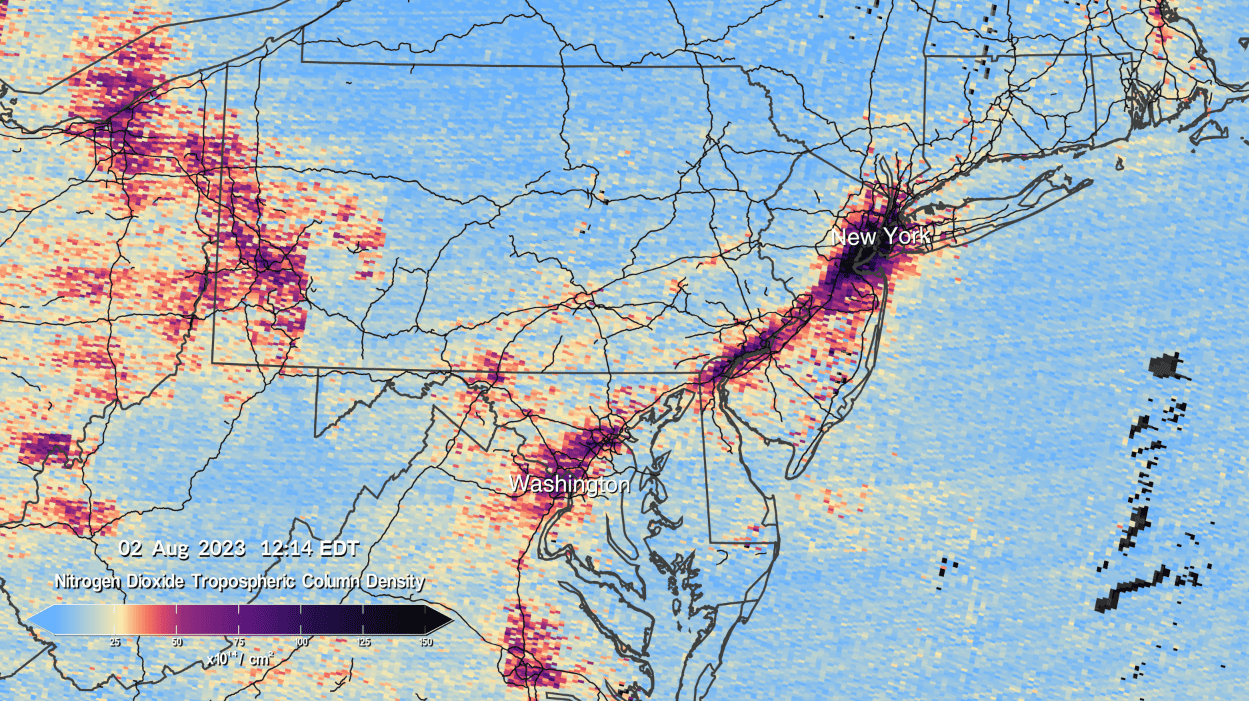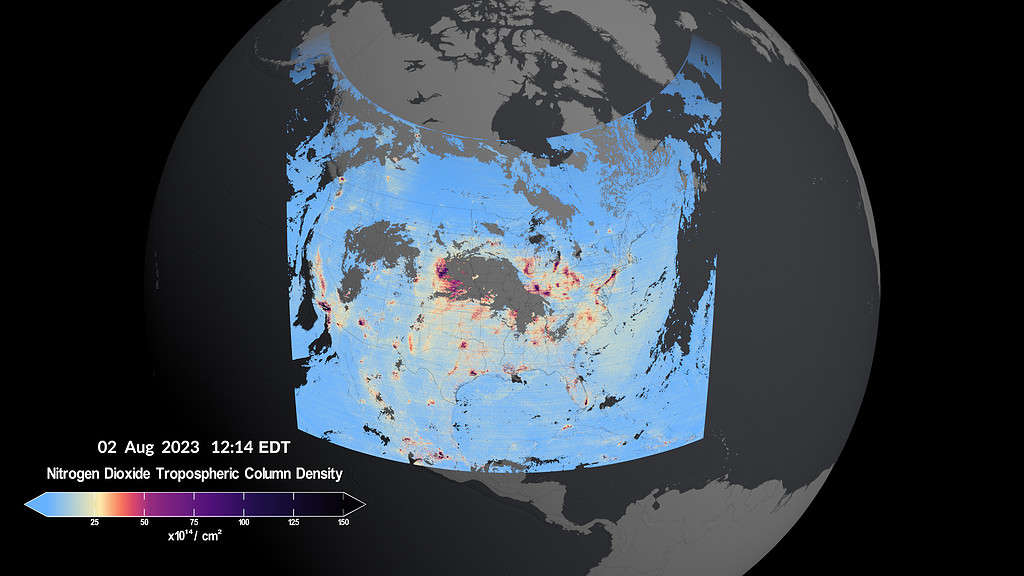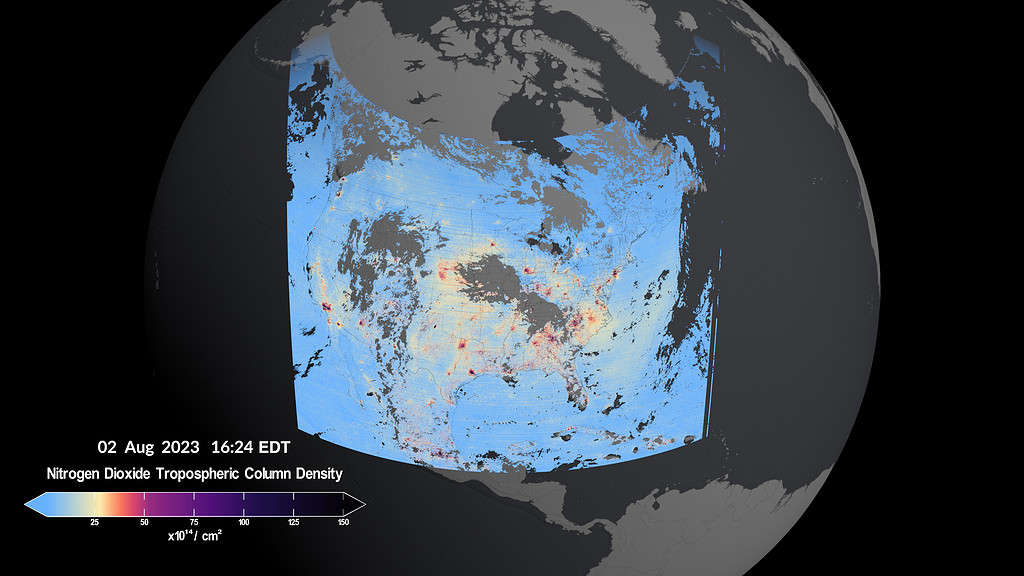
NASA’s new satellite instrument, TEMPO, is about to turn the skies above North America into a high-definition pollution map. Imagine having real-time snapshots of everything from tailpipe emissions on your morning commute to the haze from distant wildfires and volcanic eruptions — that’s exactly what TEMPO is aiming for.
The instrument will deliver comprehensive data on a wide array of pollutants. It will also provide critical insights into the agricultural impact on air quality, including the effects of fertilizer application on farmland. TEMPO’s groundbreaking data will even enable scientists to dig deep into the health consequences of pollution on local communities.
Why does this matter? Because understanding pollution at this intricate level is the first step in creating cleaner, healthier spaces for us all to live, work, and breathe.
The eye in the sky
Monitoring pollution from the ground requires a lot of sensors and is time-consuming. So scientists are increasingly using satellites to monitor all sorts of pollutants.
TEMPO measures sunlight reflected and scattered off Earth’s surface, clouds, and atmosphere. Many gases in the atmosphere absorb sunlight and interact with it in different ways. These interactions (specifically, the resulting spectra) can be analyzed to determine the concentrations of several gases in the air — especially pollutants.
The satellite took its first measurements of one such pollutant (nitrogen dioxide) on August 2, 2023, but NASA wanted to analyze the data first and make sure everything was going according to plan and was functioning properly. Nitrogen dioxide (NO2) forms when fossil fuels such as coal, oil, gas, or diesel are burned at high temperatures. Nitrogen dioxide can cause respiratory disease by decreasing the lungs’ defenses against bacteria and accentuating problems such as asthma.
But TEMPO isn’t the first satellite to monitor pollution from space. What makes TEMPO so special is its resolution — both in time and in space.
First, its instruments are able to monitor pollution with remarkable precision and at a remarkable spatial resolution. This means that authorities can map how different local communities like neighborhoods are exposed to pollution. This is particularly important because research has shown that there’s a great pollution disparity in the US, with lower-income communities being particularly more exposed.
Secondly, the satellite also has excellent temporal resolution. Essentially, previous satellite instruments only passed over a location once per day. But TEMPO is in a geostationary orbit — it keeps an eye on the same region (North America). So it can continuously observe North American pollution from hour to hour. You can see how traffic jams affect pollution, or if there’s a wildfire or some leaky oil pipe, it opens up a lot of possibilities.
“TEMPO is beginning to measure hourly daytime air pollution over greater North America,” said Kelly Chance, TEMPO principal investigator. “It measures ozone, nitrogen dioxide, formaldehyde, aerosols, water vapor, and several trace gases. There are already almost 50 science studies being planned that are based around this new way to collect data,” the scientist added.
Monitoring Earth
TEMPO is a collaboration between NASA and the Smithsonian Astrophysical Observatory. It’s also the first Earth Venture-Instrument (EVI) mission. The EVI program is a series of low-cost missions that will enable us to better understand the current state of the Earth, monitoring environmental changes. Among other missions, the program will also include a cyclone monitor, a mineral dust investigator, and a monitor for aerosols.
It’s encouraging that the first EVI mission is working so well. Already, the data is usable and reliable. Unsurprisingly, the maps show concentrations of nitrogen dioxide gas from pollution around cities and major transportation arteries of North America, especially around rush hour. For now, there are a few more commissioning tests to run and then, the TEMPO data will be released and updated regularly, NASA says.
“We are excited to see the initial data from the TEMPO instrument and that the performance is as good as we could have imagined now that it is operating in space,” said Kevin Daugherty, TEMPO project manager at NASA’s Langley Research Center in Hampton, Virginia. “We look forward to completing commissioning of the instrument and then starting science research.”
TEMPO will also be a part of a larger monitoring network, along with the planned Sentinel-4 from ESA and the Geostationary Environment Monitoring Spectrometer (GEMS) from South Korea’s space agency. This network will cover a large part of the world, offering us a better view of pollutants than ever before. The advent of such missions marks not just a technological milestone, but a pivotal moment for public health and environmental stewardship. It’s using space science to better our lives here on Earth.








